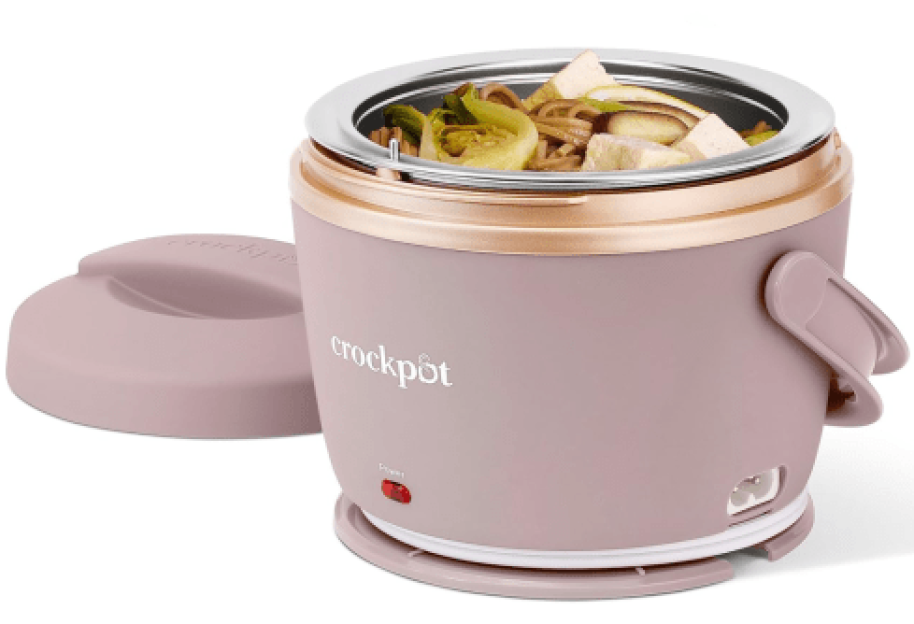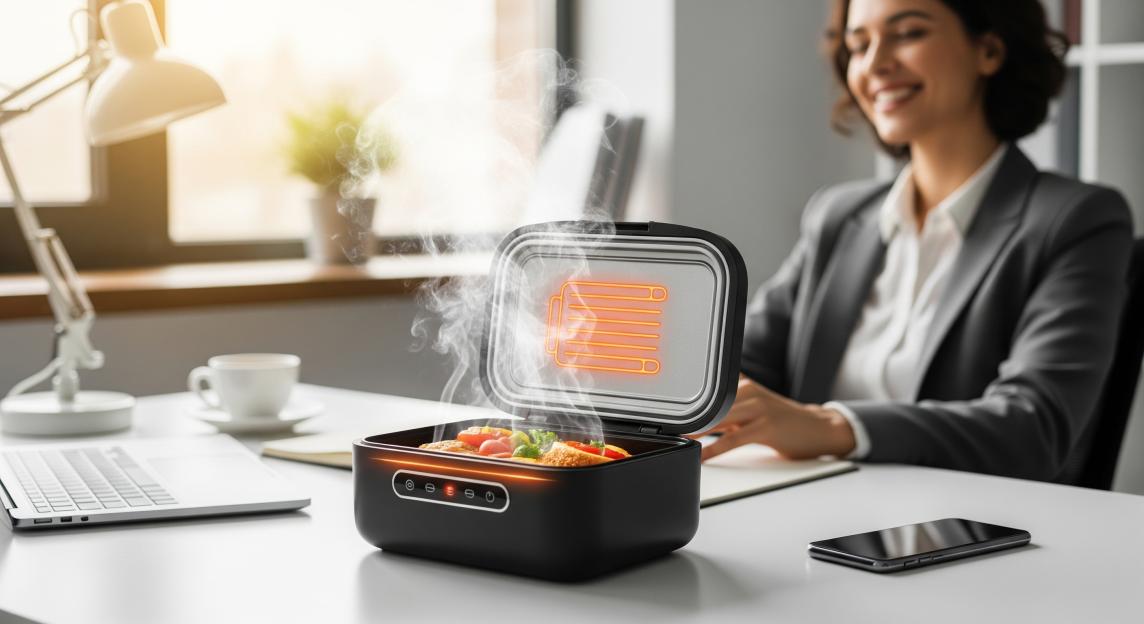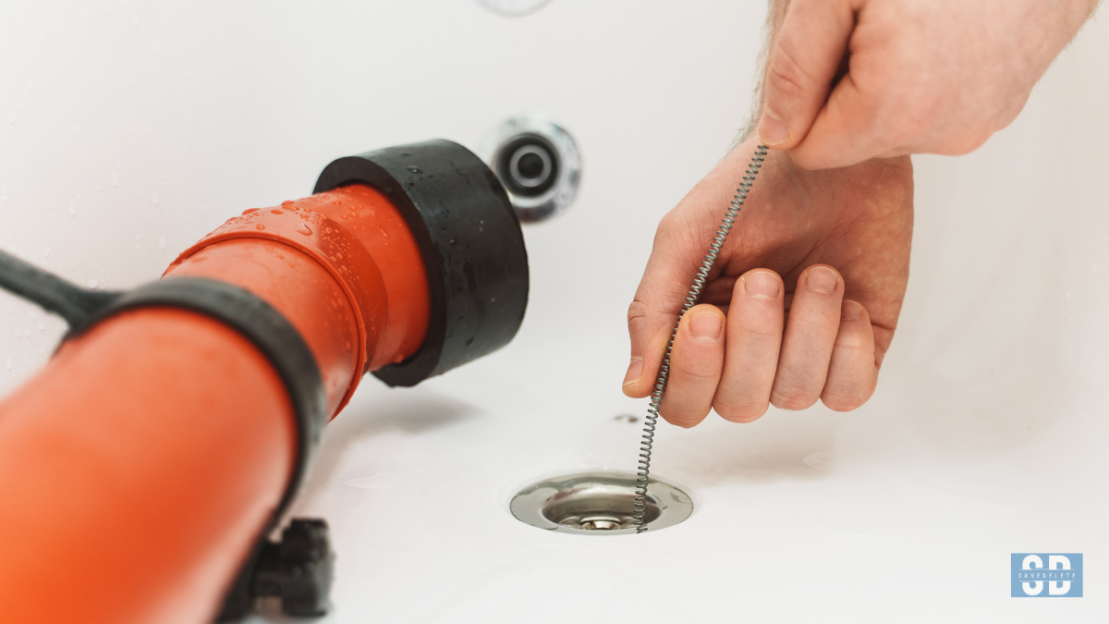You’re at your desk at 1 PM, stomach growling, and you pull out yesterday’s leftover pasta from your bag. Instead of trudging to the break room microwave that’s probably dirty and definitely has a line, you simply press a button.
Within minutes, steam rises from your container, carrying the rich aroma of a perfectly heated meal. No outlets needed.
No waiting in line. Just hot, delicious food exactly when and where you want it. This isn’t science fiction â it’s the reality of modern lunch solutions that are changing how we eat on the go.
What Is a Self-Heating Lunch Box and Why Everyone’s Talking About It

A self-heating lunch box is a portable food container that warms your meals without electricity, microwaves, or any external heat source. These innovative lunch containers use safe chemical reactions or rechargeable heating elements to bring your cold food to the perfect eating temperature wherever you are.
Think of it as having a personal chef who specializes in one thing: making sure your lunch is always served hot and ready. Whether you’re stuck in traffic, camping in the wilderness, working in a construction site, or sitting in an office building with a broken microwave, your self-heating lunch box ensures you never have to settle for cold food again.
The technology behind these heated lunch containers has evolved dramatically. What started as military rations has transformed into sleek, user-friendly devices that look great on any desk or picnic table. Modern self-heating lunch boxes come in various sizes, from compact single-serving units perfect for office workers to family-sized containers ideal for outdoor adventures.
How Self-Heating Lunch Boxes Actually Work: The Science Made Simple
Chemical Heating Technology
Most portable self-heating lunch boxes use a chemical reaction similar to hand warmers. When you activate the heating element, usually by pressing a button or pulling a tab, it triggers a reaction between ingredients like iron powder, salt, and activated carbon. This reaction produces heat without flames, smoke, or dangerous fumes.
The beauty of this chemical heating system lies in its simplicity. There are no moving parts to break, no batteries to charge, and no complicated setup procedures. You simply add your food, activate the heating element, and wait. The chemical reaction typically lasts 15-20 minutes, generating enough heat to warm most meals to approximately 140-160°F (60-70°C).
Electric Heating Elements
More advanced heated food containers feature rechargeable electric heating elements. These battery-powered lunch boxes plug into your car’s 12V outlet, a standard wall outlet, or use rechargeable lithium batteries. Electric models offer more precise temperature control and can often keep food warm for several hours.
Electric self-heating lunch boxes typically include smart features like automatic shut-off, temperature indicators, and even smartphone apps that let you start heating your meal before you’re ready to eat. Some premium models include dual heating zones, allowing you to heat different foods at different temperatures simultaneously.
Types of Self-Heating Lunch Boxes: Finding Your Perfect Match
Disposable Chemical Heating Lunch Boxes
These single-use heating lunch containers are perfect for occasional use or emergency situations. Popular brands like HotBox and Magic Heat offer disposable units that activate with a simple button press. While they create waste, they’re incredibly convenient for camping trips, emergency kits, or trying the technology before investing in a reusable option.
Disposable heated lunch containers typically cost $3-7 per use and can heat meals weighing up to 12 ounces. They’re TSA-friendly for air travel and don’t require any preparation or maintenance.
Rechargeable Electric Models
Electric self-heating lunch boxes represent the premium end of the market. Brands like Crock-Pot, Hotlogic, and TRAVELISIMO offer sophisticated models with precise temperature control, multiple heating zones, and long-lasting batteries.
These portable meal warmers typically feature:
- Rechargeable lithium batteries lasting 2-4 heating cycles
- Temperature control from 100°F to 180°F
- Insulated construction to maintain heat
- Dishwasher-safe food containers
- Car charger compatibility
- LED indicators showing heating status
Hybrid Chemical-Electric Systems
Some innovative heated food containers combine both technologies, offering chemical heating for quick warmth and electric elements for temperature maintenance. These versatile units provide the best of both worlds: instant activation when you need it and sustained warmth when you want to enjoy a leisurely meal.
Key Benefits: Why Self-Heating Lunch Boxes Are Game-Changers
Ultimate Convenience and Portability
The primary advantage of any self-heating lunch box is complete independence from external heat sources. Whether you’re working at a remote job site, traveling in an RV, or simply tired of waiting for the office microwave, these heating lunch containers provide instant meal solutions.
This portability extends beyond just heating food. Many models include compartments for utensils, napkins, and condiments, creating a complete mobile dining solution. You can pack everything you need for lunch in one compact unit that fits easily in a backpack, briefcase, or car.
Significant Cost Savings
Regular restaurant lunches can easily cost $10-15 per day. Over a year, that’s $2,500-3,900 just for weekday lunches. A quality self-heating lunch box costs $30-150 upfront and pays for itself within weeks of use.
Even factoring in the cost of chemical heating packs for disposable models, you’ll save thousands annually by bringing home-cooked meals instead of buying restaurant food. The financial benefits become even more substantial for families, where multiple people can use heated lunch containers.
Superior Food Safety and Quality
Heated food containers maintain proper food temperatures that inhibit bacterial growth. The FDA recommends keeping hot foods above 140°F to prevent foodborne illness. Self-heating lunch boxes achieve and maintain these safe temperatures, reducing health risks associated with cold food that’s been sitting at room temperature.
Additionally, you control every ingredient in your meals when using a self-heating lunch box. No mystery ingredients, excessive sodium, or hidden preservatives. You know exactly what you’re eating because you prepared it yourself.
Environmental Impact Reduction
By eliminating the need for disposable containers, plastic utensils, and takeout packaging, heated lunch containers significantly reduce your environmental footprint. Even disposable chemical heating packs create less waste than daily restaurant meals with their associated packaging.
Many electric self-heating lunch boxes feature durable construction designed to last for years, further reducing environmental impact. Some manufacturers even offer recycling programs for old units and replacement parts.
Essential Features to Look for When Shopping
Heating Performance and Speed
The most critical feature of any self-heating lunch box is its ability to heat food quickly and evenly. Look for models that can reach serving temperature (140°F+) within 15-20 minutes. Some premium heated food containers can achieve this in just 10 minutes.
Temperature uniformity is equally important. The best heating lunch containers use multiple heating elements or clever design features to ensure your food heats evenly without hot spots or cold areas.
Capacity and Size Options
Self-heating lunch boxes range from compact 12-ounce units perfect for individual portions to large 40-ounce models suitable for family meals. Consider your typical meal size and whether you prefer one large compartment or multiple smaller sections.
Many portable meal warmers include removable dividers or stackable containers, allowing you to customize the space for different types of meals. This flexibility proves invaluable when you want to pack soup and sandwich separately or keep different foods at different temperatures.
Battery Life and Power Options
For electric models, battery life determines how many meals you can heat before recharging. Quality heated lunch containers provide 2-4 full heating cycles per charge, with some premium models offering up to 8 cycles.
Multiple charging options add convenience. Look for self-heating lunch boxes that charge via standard AC outlets, 12V car adapters, and USB ports. Some newer models even support wireless charging pads.
Build Quality and Durability
A self-heating lunch box is an investment in your daily routine, so construction quality matters. Stainless steel heating lunch containers offer superior durability and easier cleaning compared to plastic models. Look for reinforced hinges, secure locking mechanisms, and impact-resistant materials.
Insulation quality affects both heating efficiency and heat retention. Double-wall construction with vacuum insulation provides the best performance, keeping food hot longer while preventing the exterior from becoming uncomfortably warm.
Safety Features and Certifications
Safety should never be compromised in heated food containers. Essential safety features include:
- Automatic shut-off to prevent overheating
- Cool-touch exteriors that don’t burn hands
- Leak-proof seals to prevent spills
- FDA-approved food-contact materials
- UL listing for electric models
- Overheat protection circuits
Top Brands and Models: Expert Recommendations
Budget-Friendly Options ($30-60)
Crock-Pot Lunch Crock Food Warmer This popular heated lunch container plugs into standard outlets and slowly warms food over 2-3 hours. While not technically self-heating since it requires electricity, it’s perfect for office workers with access to power outlets. The 20-ounce capacity handles most lunch portions, and the included utensils make it a complete package.
TRAVELISIMO Heating Lunch Box This rechargeable self-heating lunch box offers excellent value with 12V car charging, home outlet charging, and enough battery capacity for 2-3 heating cycles. The 1.5-liter capacity works well for substantial meals, and the stainless steel construction ensures durability.
Mid-Range Models ($60-120)
Hotlogic Mini Personal Portable Oven While technically a portable oven rather than a traditional self-heating lunch box, this device heats and maintains food temperature using low, even heat. It’s perfect for office workers who want restaurant-quality heated meals without leaving their desk.
YISSVIC Portable Food Warmer This electric heated lunch container features dual voltage (110V/12V) operation, making it perfect for both home and car use. The large 1.8-liter capacity can easily handle family-sized portions, and the removable stainless steel container simplifies cleaning.
Premium Options ($120+)
Bentgo Connect Smart Lunch Box This high-tech self-heating lunch box connects to your smartphone, allowing you to start heating meals remotely. The precision temperature control, multiple heating zones, and premium insulation justify the higher price for serious lunch enthusiasts.
Nomad Portable Grill and Food Warmer While primarily designed as a portable grill, this versatile unit also functions as an excellent heated food container. The rechargeable battery provides multiple heating cycles, and the rugged construction makes it ideal for outdoor activities.
Step-by-Step Usage Guide: Getting the Most from Your Heated Lunch Container
Preparation and Packing
Proper preparation maximizes the effectiveness of your self-heating lunch box. Start with food that’s already cooked and cooled to room temperature. Avoid packing frozen items, as they require more energy to heat and may not reach safe serving temperatures.
Cut food into smaller, uniform pieces to ensure even heating. Dense items like potatoes or thick meat should be sliced thinner, while lighter foods like pasta or rice can remain in larger portions. This simple step dramatically improves heating performance.
Add a small amount of liquid (water, broth, or sauce) to prevent food from drying out during heating. Most heated lunch containers work by steam heating, so this moisture is essential for optimal results.
Heating Process and Timing
For chemical heating models, activate the heating element just before you’re ready to eat. Most chemical reactions cannot be stopped once started, so timing is crucial. Press the activation button firmly and ensure you hear or feel the reaction beginning.
Electric self-heating lunch boxes offer more flexibility. You can start the heating process 15-30 minutes before mealtime, allowing the food to reach optimal temperature gradually. Many models include timers that automatically shut off heating at the perfect moment.
During heating, avoid opening the container repeatedly to check progress. Each opening releases heat and extends the total heating time. Most heated food containers include indicator lights or sounds to signal when heating is complete.
Safety and Maintenance
Always allow chemical heating elements to cool completely before disposal. The heating packs become very hot during use and may burn fingers or damage surfaces if handled immediately after use.
For electric models, unplug and allow cooling before cleaning. Never submerge the heating base in water. Instead, wipe with damp cloths and use mild detergents for the food containers.
Store your self-heating lunch box in a cool, dry place when not in use. Remove any food residue promptly to prevent odors and bacterial growth. Regular cleaning with warm, soapy water keeps your heated lunch container hygienic and functioning properly.
Smart Meal Planning for Self-Heating Success
Best Foods for Heating Lunch Containers
Certain foods work exceptionally well in self-heating lunch boxes. Soups, stews, and casseroles heat evenly and maintain excellent texture and flavor. Rice dishes, pasta, and grain-based meals also perform well because they absorb heat gradually without overcooking.
Protein-rich foods like chicken, beef, and fish heat effectively when cut into appropriate sizes. Avoid breaded or crispy items, which may become soggy during steam heating. Instead, pack crispy elements separately and add them after heating.
Vegetables heat beautifully in heated food containers, especially root vegetables, squash, and leafy greens. Pre-cooking vegetables slightly before packing ensures they reach perfect tenderness during the heating cycle.
Meal Prep Strategies
Successful self-heating lunch box users often prepare several meals simultaneously during weekend meal prep sessions. Cook large batches of heating-friendly foods like chili, curry, or stir-fry, then portion them into individual containers for the week.
Invest in quality food storage containers that fit perfectly in your self-heating lunch box. Having properly sized containers eliminates air gaps that reduce heating efficiency and ensures consistent results every day.
Label prepared meals with contents and packing dates. Most prepared foods stay fresh in the refrigerator for 3-4 days, giving you flexibility in your lunch planning while maintaining food safety standards.
Avoiding Common Mistakes
Don’t overfill your heating lunch container. Overcrowding prevents proper heat circulation and results in unevenly heated food. Most self-heating lunch boxes work best when filled to about 75% capacity.
Avoid mixing very different foods with dramatically different heating requirements. For example, don’t combine dense root vegetables with delicate seafood in the same compartment. Instead, use divided containers or pack complementary foods together.
Never use your self-heating lunch box for heating raw foods. These devices are designed to reheat already-cooked meals, not cook raw ingredients. Attempting to cook raw food may result in unsafe temperatures and potential foodborne illness.
Troubleshooting Common Issues
Inconsistent Heating Problems
If your heated food container doesn’t heat evenly, check for several common issues. Overpacking is the most frequent cause of uneven heating. Food pieces that are too large or densely packed prevent proper heat circulation.
Insufficient moisture can also cause heating problems. Add a tablespoon of water, broth, or sauce to create steam that distributes heat evenly throughout your meal. This technique works especially well for rice, pasta, and grain dishes.
For electric models, battery degradation can cause insufficient heating power. If your self-heating lunch box used to work well but now produces lukewarm results, the battery may need replacement or the unit may require professional service.
Battery and Power Issues
Electric heated lunch containers may experience power-related problems over time. If your unit won’t charge, first check all connections and try different outlets or charging cables. Many charging issues stem from loose connections rather than actual battery problems.
Battery life naturally decreases with age and use cycles. Most rechargeable self-heating lunch boxes maintain optimal performance for 2-3 years with regular use. After this period, you may notice reduced heating cycles per charge or longer charging times.
Some electric models include battery reset procedures that can restore performance. Consult your user manual for specific instructions, as reset procedures vary between manufacturers and models.
Cleaning and Maintenance Solutions
Proper maintenance prevents most problems with heated food containers. Clean your self-heating lunch box after every use, paying special attention to food contact surfaces and sealing areas.
For stubborn odors, create a paste from baking soda and water, apply it to affected areas, and let it sit overnight before rinsing. This natural deodorizing method works better than harsh chemicals and won’t damage your heating lunch container.
If your unit develops leaks, check all sealing surfaces for damage or food residue. Most leaks occur at gasket interfaces where dried food prevents proper sealing. Gentle cleaning with warm, soapy water usually resolves these issues.
Cost Analysis: Investment vs. Savings
Initial Investment Breakdown
Self-heating lunch boxes range from $30 for basic chemical models to $200+ for premium electric units with advanced features. Most people find excellent options in the $60-120 range that provide years of reliable service.
Consider the total cost of ownership when evaluating different models. Chemical heating units require ongoing purchases of heating packs ($1-3 per use), while electric models have higher upfront costs but minimal ongoing expenses.
Factor in accessories like additional food containers, carrying cases, and replacement parts when calculating total investment. Many manufacturers offer starter packages that include everything needed for immediate use.
Daily Savings Calculation
The average American spends $12.50 on lunch when dining out, according to recent surveys. Bringing lunch saves approximately $10 per day, assuming $2.50 in ingredient costs for homemade meals.
Over 250 working days per year, using a self-heating lunch box instead of buying lunch saves $2,500 annually for one person. Families using multiple heated lunch containers can save even more by eliminating restaurant meals for children and spouses.
Additional savings come from reduced food waste, since you control portion sizes and can use leftovers effectively. Many self-heating lunch box users report 20-30% reductions in household food waste.
Long-Term Financial Benefits
Quality heated food containers last 3-5 years with proper care, making the cost per use extremely low. A $100 self-heating lunch box used 200 times per year for 4 years costs just $0.125 per use.
The health benefits of home-cooked meals can also provide long-term financial advantages through reduced healthcare costs. Controlling ingredients, portion sizes, and nutritional content typically leads to better overall health outcomes.
Many users find that owning a self-heating lunch box encourages better meal planning and cooking skills, leading to additional savings on grocery bills and restaurant visits beyond just lunch expenses.
Safety Guidelines and Best Practices
Food Safety Fundamentals
Proper food safety practices are essential when using any heated lunch container. Start with fresh, properly cooked food and cool it to room temperature before packing. Never pack food that’s been sitting at room temperature for more than 2 hours.
Maintain proper refrigeration until you’re ready to use your self-heating lunch box. Pack your heated food container in an insulated bag with ice packs if you won’t be heating the meal within 4 hours of removing it from refrigeration.
Always heat food to at least 140°F (60°C) to ensure food safety. Most self-heating lunch boxes achieve temperatures of 150-165°F, well above the safe threshold. If your unit includes a thermometer, verify temperatures before eating.
Chemical Safety for Disposable Models
Disposable chemical heating packs are generally safe when used properly, but basic precautions are important. Never puncture or attempt to open heating packs, as the contents may cause skin irritation if contacted directly.
Allow used heating packs to cool completely before disposal. The chemical reaction generates significant heat that can cause burns or start fires if not handled properly. Most heating packs cool within 30-60 minutes after activation.
Keep unused heating packs dry and store them in cool locations. Moisture or excessive heat can cause premature activation, rendering the packs useless when you need them.
Electric Safety Considerations
Electric self-heating lunch boxes require standard electrical safety practices. Inspect charging cables regularly for damage and replace any frayed or damaged cords immediately. Never charge your heated lunch container on beds, couches, or other soft surfaces that might block ventilation.
Avoid exposing electric models to extreme temperatures, which can damage batteries and electronic components. Don’t leave your self-heating lunch box in hot cars during summer or freezing conditions during winter.
If your electric heated food container shows any signs of malfunction (unusual smells, excessive heat, failure to charge), discontinue use immediately and contact the manufacturer for service or replacement.
Environmental Impact and Sustainability
Waste Reduction Benefits
Self-heating lunch boxes dramatically reduce packaging waste compared to restaurant meals or prepared foods. The average takeout meal generates 4-6 pieces of disposable packaging, while packed lunches in reusable heated lunch containers create zero ongoing waste.
Even disposable chemical heating packs create less environmental impact than daily restaurant visits. One heating pack replaces the plastic containers, utensils, napkins, and bags associated with typical takeout meals.
Many electric self-heating lunch boxes last 5-10 years with proper care, making them exceptionally sustainable options. The environmental cost of manufacturing one durable unit is far less than hundreds of disposable food containers over the same period.
Energy Efficiency Considerations
Modern heated food containers use energy efficiently compared to traditional heating methods. Chemical heating packs generate heat through exothermic reactions without requiring any external energy sources.
Electric models typically consume 50-100 watts during heating cycles, roughly equivalent to a bright light bulb. Most units complete heating cycles in 15-20 minutes, making total energy consumption minimal.
The energy efficiency of self-heating lunch boxes becomes even more apparent when compared to restaurant food preparation, which includes cooking, refrigeration, transportation, and facility overhead energy costs.
Sustainable Material Choices
Premium heated lunch containers increasingly feature sustainable materials like recycled stainless steel, BPA-free plastics, and biodegradable insulation. These material choices reduce environmental impact while maintaining performance and safety standards.
Some manufacturers offer take-back programs for old units, ensuring proper recycling of electronic components and materials. These programs prevent heated food containers from ending up in landfills and recover valuable materials for reuse.
Look for certifications like Energy Star (for electric models) or cradle-to-cradle design principles when selecting your self-heating lunch box. These certifications indicate manufacturers’ commitment to environmental responsibility throughout the product lifecycle.
Future Trends and Innovations
Smart Technology Integration
The next generation of self-heating lunch boxes includes sophisticated smart features that enhance user experience and food safety. Smartphone apps now allow remote heating activation, temperature monitoring, and meal tracking.
Some advanced heated lunch containers include built-in scales that calculate heating times based on food weight and type. These smart features eliminate guesswork and ensure consistent results every time.
Future models may include AI-powered meal recognition that automatically adjusts heating parameters based on food type, moisture content, and desired serving temperature. This technology could make heated food containers even more user-friendly and effective.
Advanced Heating Technologies
Researchers are developing new heating technologies that could revolutionize portable meal warmers. Induction heating elements promise faster, more efficient heating with precise temperature control and longer battery life.
Phase-change materials offer another promising innovation, storing thermal energy during charging and releasing it gradually during heating cycles. This technology could enable self-heating lunch boxes that maintain serving temperatures for hours without active heating.
Solar-powered heated lunch containers represent an emerging technology for outdoor enthusiasts and environmentally conscious users. These units use solar panels to charge batteries or directly power heating elements, eliminating grid electricity dependence.
Market Evolution and Accessibility
As self-heating lunch box technology matures, prices continue to decrease while features and reliability improve. This trend makes heated food containers accessible to more consumers and encourages widespread adoption.
Manufacturers are developing specialized models for specific user groups, including medical professionals who need heated meals during long shifts, construction workers requiring durable outdoor-rated units, and students seeking affordable, compact options.
The global market for portable meal warmers is expanding rapidly, driven by busy lifestyles, remote work trends, and increased awareness of healthy eating benefits. This growth fuels continued innovation and competitive pricing.
Frequently Asked Questions
How long do self-heating lunch boxes keep food warm?
Most self-heating lunch boxes maintain serving temperatures for 30-60 minutes after the heating cycle completes. High-quality insulated models can keep food warm for up to 2 hours, while basic units may only maintain heat for 20-30 minutes.
Electric heated food containers typically offer better heat retention than chemical models because they can continue providing low-level heating even after the main cycle completes. Some premium units include “keep warm” modes that maintain food temperature for several hours.
The actual heat retention depends on several factors including ambient temperature, food type, container size, and insulation quality. Dense foods like stews retain heat longer than light foods like salads or sandwiches.
Can you reheat food multiple times in the same container?
While technically possible, reheating food multiple times raises food safety concerns and isn’t recommended. Each heating cycle increases the risk of bacterial growth and can degrade food quality and nutrition.
Most self-heating lunch boxes are designed for single-use heating cycles per meal. If you need to keep food warm for extended periods, choose models with “keep warm” functions rather than repeatedly reheating the same food.
For best results and safety, heat food once to serving temperature and consume it within 2 hours. If you can’t finish your meal, refrigerate leftovers promptly and use fresh heating packs or fully charged batteries for the next heating cycle.
Are self-heating lunch boxes airplane-friendly?
Disposable chemical heating packs are generally prohibited on commercial flights due to their reactive nature. However, electric self-heating lunch boxes are typically allowed in carry-on luggage when batteries are removed or the unit is completely discharged.
Check with your airline before traveling, as policies vary between carriers and destinations. Some airlines allow electric heated lunch containers in checked luggage but prohibit them in carry-on bags.
Consider packing your self-heating lunch box without heating elements for air travel, then purchase disposable heating packs at your destination if needed. This approach eliminates airline restrictions while maintaining meal heating capability.
How do you clean and maintain these devices?
Regular cleaning keeps your heated food container hygienic and functioning properly. Remove all food residue after each use and wash removable containers with warm, soapy water. Avoid submerging electrical components in water.
For deep cleaning, use a mixture of baking soda and water to remove stubborn odors and stains. Let the paste sit for several hours before rinsing thoroughly. This natural cleaning method works better than harsh chemicals.
Electric models require additional maintenance including battery care and charging port cleaning. Store your self-heating lunch box with batteries partially charged (about 50%) if you won’t use it for extended periods.
What’s the typical lifespan of these containers?
Quality self-heating lunch boxes typically last 3-5 years with regular use and proper maintenance. Electric models may require battery replacement after 2-3 years, but the heating elements and containers often function much longer.
Disposable chemical heating packs have unlimited shelf life when stored properly but can only be used once. Stock up on heating packs if you find good deals, as they don’t expire when kept dry and cool.
The lifespan depends heavily on usage frequency, care practices, and build quality. Premium heated lunch containers with stainless steel construction and quality electronics often last 7-10 years or more.
Conclusion: Transform Your Lunch Experience Today
Self-heating lunch boxes represent a fundamental shift in how we approach daily meals. These innovative heated food containers eliminate the frustrations of cold lunches, unavailable microwaves, and expensive restaurant meals while promoting healthier eating habits and significant cost savings.
Whether you choose a simple chemical heating model for occasional use or invest in a premium electric heated lunch container with smart features, you’re making a decision that will improve your daily routine for years to come. The combination of convenience, cost savings, and better nutrition makes self-heating lunch boxes one of the most practical innovations in modern food storage.
The technology continues evolving rapidly, with new features and improved performance appearing regularly. As more people discover the benefits of portable meal warmers, manufacturers respond with better designs, lower prices, and enhanced functionality.
Don’t let another lunch hour pass with cold, unsatisfying food or expensive takeout meals. Join the growing community of self-heating lunch box users who enjoy hot, delicious meals anywhere, anytime. Your taste buds, wallet, and schedule will thank you.
Start your heated lunch container journey today and experience the freedom of perfectly warmed meals wherever life takes you. The revolution in portable dining has arrived, and it fits right in your bag.







